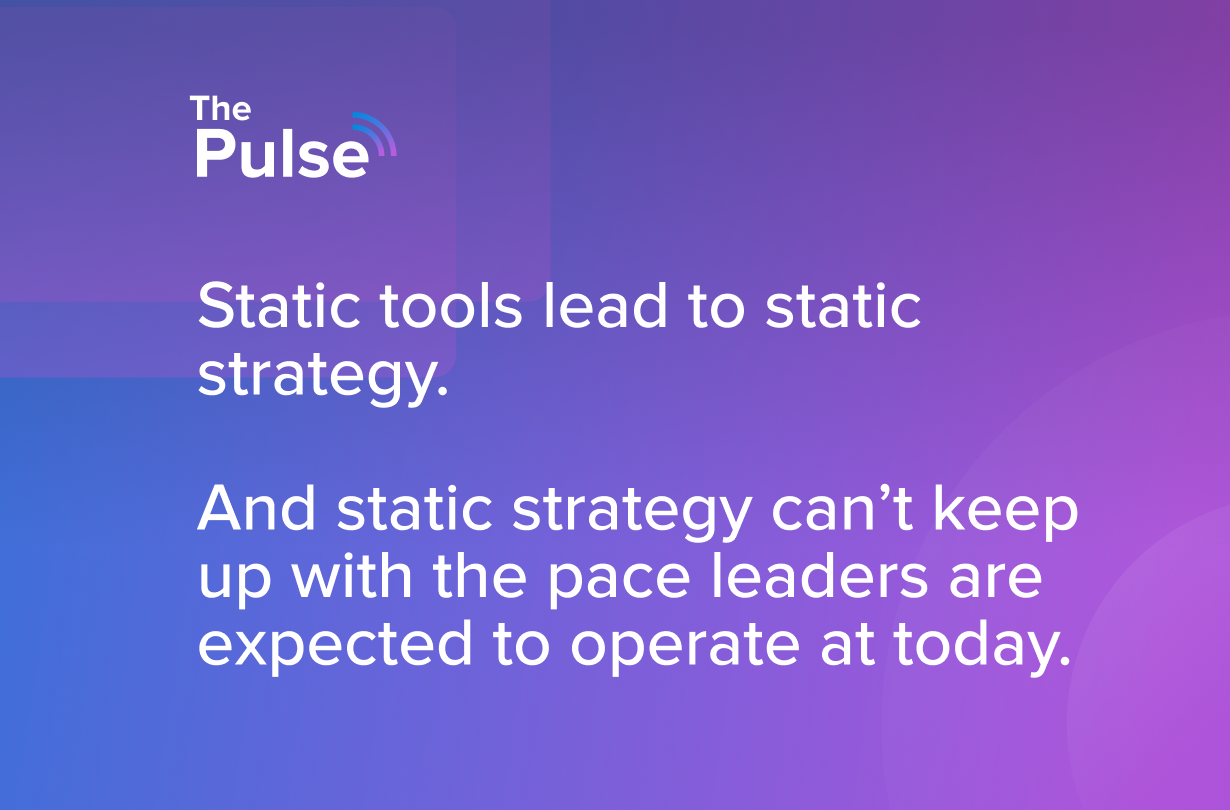
With Q4 and annual planning right around the corner, it's the time of year where goal-setting frameworks become front and center for companies. For many strategy and operations leaders the task of coordinating, running, and carrying out the execution of these frameworks falls to them.
So as we head into planning season, we wanted to share some of the best practices we've seen from leading strategy and operations leaders we work with at Elate.
From defining what OKRs mean to your company to identifying the people, processes, and tools that are right for your company, we walk through how you can set your team up for success this planning season.
Define How Your Company Sets OKRs
Maybe the most important, but often overlooked part of setting OKRs is first setting a universal standard for what OKRs should represent at your company.
For some companies, OKRs are meant to be attainable, almost expected. We work with companies that aim to reach 100% attainment of OKRs, because they set them as foundational goals that the company expects to achieve.
For others, OKRs are ultra aggressive. They are meant to be hard to attain, and success can be reaching 75% of key results for an objective.
From what we've seen across many of the companies we work with, they use a blend of the two models. They set realistic, attainable goals that they want employees to feel they can achieve, while also setting a few stretch goals on certain objects that give a little extra push toward overachieving on certain key results. The key in these examples is to help individuals feel as though they have objectives they can meet, while the company-wide objectives might be more aggressive. This way individuals can succeed and rally around the company objectives together.
The reality is any option can work. What’s more important than choosing either option is ensuring you communicate and set proper expectations with employees, and provide OKR examples that align with what you expect to see.
As the OKR book 'Measure What Matters' outlines, any OKR framework should be tailored to the specific business. So don't try to be so cut and dry with OKRs that you lose sight of the importance of tailoring it towards your business needs.

Create a Regular Cadence for Setting OKRs
In addition to defining how OKRs are set at your company, it’s also important to create a clear cadence for when OKRs are set.
For high growth or venture backed companies, OKRs are typically set on a quarterly and annual basis. While there are often monthly, even weekly goals that roll up to those quarterly or annual objectives, setting OKRs more often than quarterly can cause confusion or force employees to lose sight of the bigger picture.
That being said, for early stage companies (think under 50 employees), it might be necessary to set more bite-sized goals because of the iterative, nimble stage of the business. But for today’s post, let’s focus on those companies with 50 employees and above.
So now that we’ve settled on OKRs being set quarterly and annually, we can start thinking about the timing for how we are setting these OKRs.
To simplify this process a bit, let’s work backwards.
If you are anticipating rolling out OKRs at the beginning of each quarter, then the likelihood is that leadership, management and individual contributors will have their OKRs set prior to the start of the quarter. What we’ve seen is that leadership should really be thinking about and working on next quarter's objectives about six weeks before you kickoff the new quarter.
This allows your team to begin communicating with management about 3-4 weeks in advance, so they can help cascade the company’s focus for the upcoming quarter. Now, this doesn’t mean that employees are setting their OKRs 3-4 weeks out, but it does allow them to start thinking about how they are continuing to build on the momentum from this quarter and the objectives they’d like to focus on in the next quarter.
Keep in mind that any objective should connect to the annual objectives or themes your company has outlined and communicated from the beginning of the year. The key to planning and setting quarterly OKRs is that they tie into the overall direction of the company and align with your company’s annual plan.

If you’d like to read a bit more about annual strategic planning, we wrote more on how you can set your team up for success heading into strategic planning this fall.
Proposing, Reviewing, and Finalizing OKRs
As we've written about in the past, setting OKRs can be an intensive, time consuming process for companies. In particular, this process can be incredibly manual for the Chief of Staff or operations leader.
Even if you’ve upgraded OKRs from Excel or Sheets, the process of manually loading OKRs into a traditional OKR software can be brutal. Tens, if not hundreds, of OKRs have to be proposed, reviewed, and finalized before your quarterly or annual plan can be finalized.
That's why it's important to ensure that one of the OKR software features you prioritize is the OKR Planning feature.
One of the most common struggles we see with companies that have recently adopted the OKR methodology is a false start in rolling out the goal-setting framework. Companies start with the best of intentions to start using the OKR goal setting process, but quickly realize that the intensive, manual work can often stifle their attempts to get a framework rolled out effectively.
That is why we built the Elate Planning feature to help companies streamline how they set objectives, pressure test OKRs, and remove the friction of the OKR review process.
Not only is this designed to save strategy and ops leaders hours of time, but it also helps create better alignment throughout the company, as well as surface insights on the OKRs that matter most to the company's success.

Meet Elate
So as you head into planning season this fall, keep in mind that selecting a Strategic Planning solution to help your team set, review, and finalize objectives can be a key ingredient to success for adopting a goal-setting framework.
To learn more about how leading strategy and operations leaders are working with Elate to build and roll-out their strategic plan for 2022, contact our team today! We'd love to learn more about your company and share how we're working with leading companies today.


